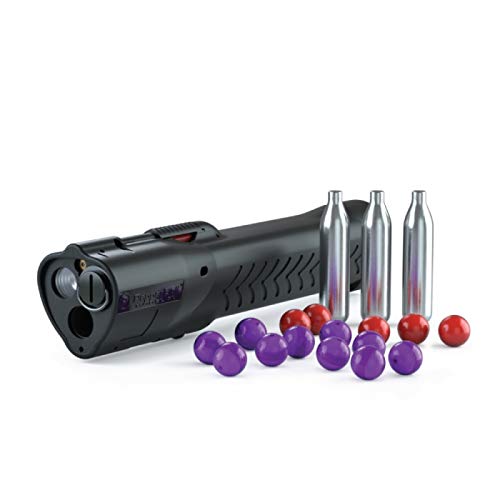
Project Safe Neighborhoods is a national law enforcement initiative funded by the federal government. This program aims reduce violent crime. This program uses neighborhood-based strategies and urban design to increase safety. The program also includes homebuilders who are responsible for making communities safer. This article will focus on the new law as well as its effects on neighborhood safety.
Project Safe Neighborhoods (NSI) is a national initiative
Project Safe Neighborhoods focuses its efforts on the prevention of violent crime and creating safer neighborhoods. It employs data-driven, evidence-based strategies to tackle the problem. It is also designed to strengthen relationships between law enforcement agencies in communities. Project Safe Neighborhoods was associated in 2013 with a 13.1% drop of violent crime, according to a Department of Justice funded study. It also led to double-digit reductions in homicides. Project Safe Neighborhoods legislation was passed unanimously by the U.S. Senate. It is a bill that aims to create safer neighborhoods in the United States.
Project Safe Neighborhoods brings together law enforcement officers, prosecutors and community-based partners to find comprehensive solutions to violent crime in communities. The U.S. Attorney's Offices from 94 federal districts coordinate the program. They account for local crime statistics and address issues that may arise in particular neighborhoods. The program also includes data analysis and research to aid communities in developing and implementing a plan for safer neighborhoods.

Its goal is to reduce violent crime
The federal government is investing in creating safer neighborhoods. This initiative will reduce violent crime by increasing the number of law enforcement officers and funding police departments to better tackle crimes. The funding will help police departments hire essential staff, compensate overtime, and purchase lifesaving equipment for officers in the street. Federal funds will also help improve law enforcement data analytics such as bodycams and CCTV footage.
The program uses a systematic, evidence-based approach for violence reduction. The PSN also draws upon lessons learned from other initiatives dealing with violent crime reduction to determine the most beneficial strategies.
It uses urban design to improve neighborhood safety
Urban design is a powerful tool in addressing neighborhood safety. It focuses on altering the physical and social environment, such as by increasing green space and restricting entry and exit points, which are key factors in crime prevention. This approach also has roots in community building. This approach aims to decrease the social motivations for crime through improving social health, and togetherness.
Although the process of altering the built environment can take a while and be costly, it is an important step towards reducing crime. Good design can help a neighborhood avoid future problems. Urban design should take accessibility into account, sustainability, and ongoing activation, activation, management.

It includes homebuilders
A homebuilder can play a key role in neighborhood safety, whether through a direct response to a report of suspicious activity or through a coordinated neighborhood watch program. Safe neighborhoods promote a sense o community among residents. This makes it easier for residents to alert each other about suspicious activity. These programs allow residents to connect with one another and build the community's social network.
It encourages community-based safety network
The Mayor's Action Plan for Safety in Neighborhoods is a program that encourages safety and gives residents the opportunity to voice their concerns. In a recent survey, respondents ranked schools and jobs as the most important safety factors in their neighborhood. Residents also cited the safety of their neighborhood's layout, crime rates, and employment opportunities as important factors.
The blueprint is based primarily on evidence and prioritizes interventions upstream that enhance community safety. Given the limited federal funding available, it is critical to create long-term, flexible, sustainable funding sources that support community safety efforts. This blueprint provides successful examples for policy interventions that can improve safety in neighborhoods and build trust with local governments.
FAQ
What is the most effective self-defense technique?
To defend yourself against an attack, avoid it entirely. If you are attacked, then run away as fast as possible. This will give you the time to consider a better strategy.
Use any defensive techniques that you know if you are unable to escape. These techniques include kicks, punches and knees. To stop your attacker from attacking you more, you can grab his arms and legs.
If none these options work, then you need to use every tool at your disposal. The best weapon to use for this purpose are your naked hands. You should learn how to use them correctly if you are not familiar with the basics.
How much does a stun gun cost?
A stungun can be priced from $20 to $100 depending on the model.
Two batteries are standard on most models. The battery lasts approximately three to four months.
How long does it take for a stungun to recharge?
This varies depending on the type of battery.
For example, AAA batteries take up to 8 hours to charge while AA batteries take approximately 2 hours.
Statistics
- Boxers aren't allowed to fight in a clinch, which is a position that occurs in 80% of the streetfights. (mmaclan.com)
- Kung Fu alone has 400 unique martial art styles – and whilst you likely won't be able to find a school for each form, many other martial arts are completely different altogether. (budodragon.com)
- The Rape, Abuse & Incest National Network reports that 70 percent of sexual violence cases aren't committed by random strangers in a dark alley but by people we know: friends, family, partners, co-workers, etc. (healthline.com)
- Some people walk into a gym thinking they are going to become the best by training whenever they like and not putting 100% effort in. (budodragon.com)
External Links
How To
How To Survive A Home Invasion
Home invasion is scary, especially for children. We didn't know we would have to go through this ourselves when we started our home security system installation journey. Here's our experience so far.
-
Do Not Allow Your Children to See The Attackers. Our children were upstairs sleeping when two men entered our house. They were taken downstairs by us until police arrived. Our kids weren't hurt, but they saw enough to traumatize them.
-
All valuables should be secured Our bedroom has a safe that holds valuables. Even if someone broke into the house, they won’t have access to it.
-
Keep an eye out on burglars. We live in an area that is prone to burglaries. We are always on the lookout for suspicious cars and people.
-
Always have a backup plan. Our family will be financially taken care of financially if anything happens. We have also made a plan to leave this country, if needed.
-
Prepare. You must be prepared if you find yourself in a position where you have to defend your life. Always have food, water, or other supplies on hand.
-
Get help immediately by calling 911. If someone breaks into your house, dial 911 immediately. It's safer to call the authorities immediately than to wait for them at your door.
-
Use common sense. Do not let anyone enter your home if you don't feel at home. You should not invite strangers to your home.
-
Seek out help from neighbors and other people in the local area. If you feel uneasy, call friends or neighbors. They can be there to help you while you call 911.
-
Keep Calm and Do What Police Officers Tell You To. Stay calm and do exactly as instructed by officers. Do not run away from officers or resist arrest.
-
Take photos of all evidence. Take pictures of any evidence found during the investigation. You can take pictures of fingerprints, blood samples, or other evidence.
-
File A Report With Local Law Enforcement. Report to law enforcement, even if there was no injury. This will help to prevent future crimes.
-
Get in touch with your insurance company immediately. Get in touch with your insurance company immediately. Tell your insurance company everything that has happened, and ask them to send an adjuster.
-
Take away personal belongings. Be sure to get rid of personal belongings before you leave. It is best to take your expensive jewelry off and place it somewhere safe.
-
Take Care of Yourself. Clean up after yourself. Take out the trash and break glass and lock all doors and windows.
-
Don't Talk About What Happened. Talk about what happened to someone else. You never know who could use this information against your later.